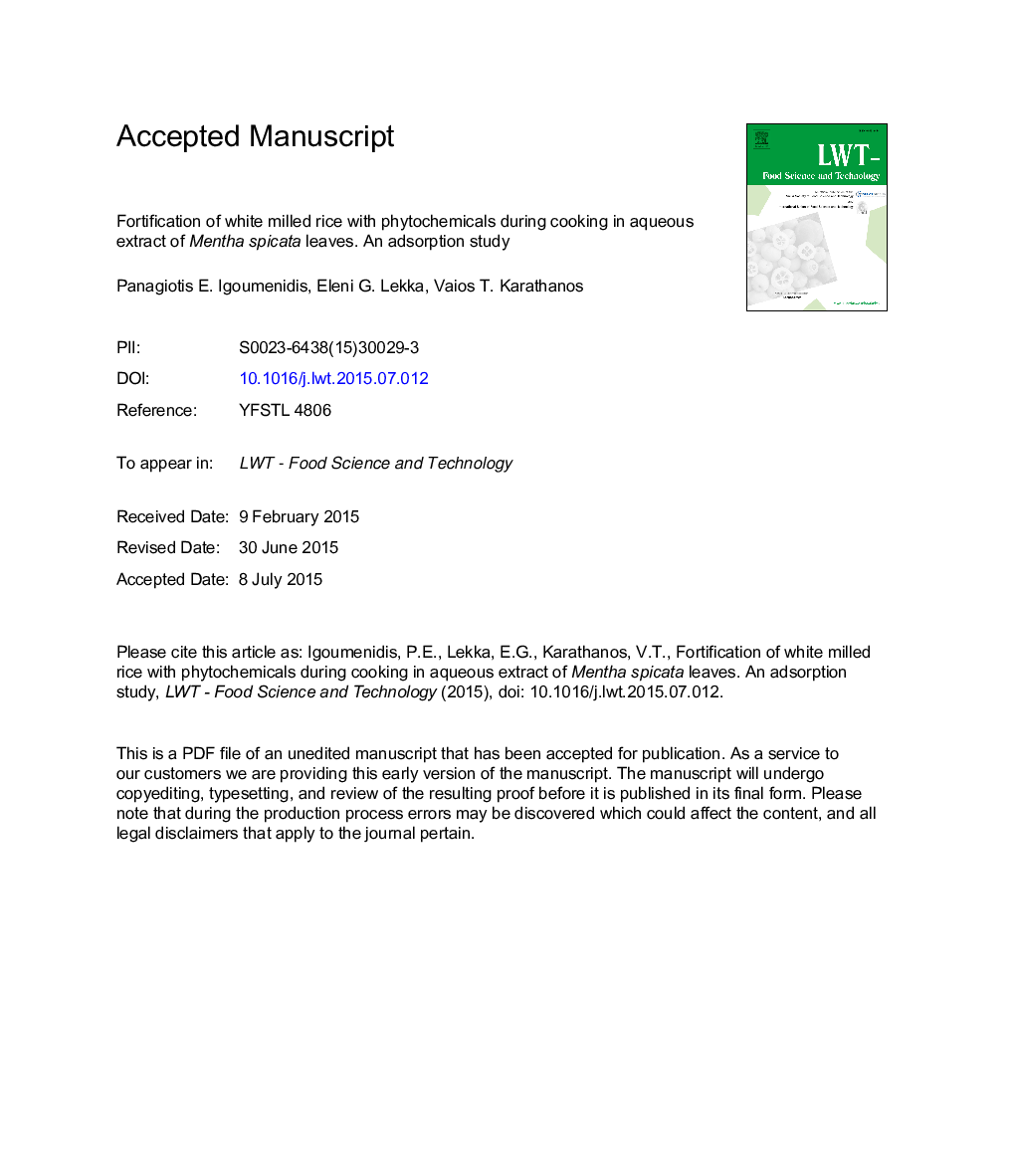| Article ID | Journal | Published Year | Pages | File Type |
|---|---|---|---|---|
| 6401635 | LWT - Food Science and Technology | 2016 | 29 Pages |
Abstract
Rice is a staple food, widely consumed worldwide, that could constitute a promising substrate for food fortification. In this study, white rice was fortified with antioxidant compounds, extracted from leaves of the traditional herb spearmint, using a conventional rice cooking process. The results showed that total polyphenol content and most of individual phenolic compounds' concentration detected in white rice samples significantly increased after 20 min of cooking in spearmint aqueous extract. Furthermore, spearmint leaves' aqueous extract exhibited great thermal stability concerning its polyphenol content during 40 min of boiling. GC/MS analysis showed that caffeic acid was the predominant phenolic compound among those detected in fortified rice and its concentration inside the grains significantly increased during cooking, apparently due to spearmint aqueous extract contribution. Moreover, caffeic acid concentration in fortified rice was found to follow a zero order kinetics pattern as a function of cooking time, reaching a value of about 8.3 μg/g of dry rice at the end of 20 min cooking process, which was by far lower compared to the theoretical equilibrium concentration (approx. 112 μg/g dry rice) of caffeic acid calculated for fortified rice flour.
Keywords
Related Topics
Life Sciences
Agricultural and Biological Sciences
Food Science
Authors
Panagiotis E. Igoumenidis, Eleni G. Lekka, Vaios T. Karathanos,
